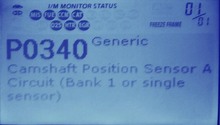Ford Mustang GT 2005-2014: Why is There Gas Fumes Going Into My Car Cabin?
Gas fumes could be deadly, so when you smell it inside your Ford Mustang GT's cabin, you should pull over immediately and diagnose the issue; this guide will help you do just that.
This article applies to the Ford Mustang GT (2005-2014).
A gas smell going into your cabin could be caused by various places. Whether it's coming from the rear of the Ford Mustang GT or the front, gasoline has fumes that could kill you. Diagnosing the issue isn't hard, especially because gasoline has a strong odor that will lead you to the faulty component. Besides the fact that the gasoline fumes are deadly, having a fuel leak near the exhaust manifold could cause a catastrophe. Heat and gas shouldn't ever be mixed, so if there is any issue that will lead you to pull over, it's this one. Read on to learn why you're smelling gasoline fumes inside of your Ford Mustang GT.

Material Needed
- Flashlight
Step 1 – Check gas cap
It could be loose or missing.
The gas cap sounds like the silliest culprit, but it's a very possible one. If your gas cap isn't attached to your car, you could forget to put it back on after pumping gas, which will cause a gas smell to go inside of your vehicle. Start this diagnostic process by opening your fuel tank door and checking the gas cap. If it's missing, replace it and make sure it clicks if it's loose.

If the gas cap is appropriately in place, proceed to Step 2.
Step 2 – Check fuel lines
They could be worn or cracked.
The fuel lines could crack overtime, which will cause a gas leak. Even though the gas leak is outside of the vehicle, the fumes are rather powerful and it will make its way to the inside of your Mustang's cabin. Use your flashlight and slide under the rear of your car. Check all the hoses coming in and out of the fuel tank. Check the connections from the lines to the tank, then follow the lines with your flashlight. Try to spot any signs of wears, cracks or wetness. Replace any leaking fuel line immediately.

If your fuel lines are in good shape, proceed to Step 3.
Step 3 – Check the fuel tank
It could be leaking.
A leaking fuel tank will produce strong gasoline fumes, and you will smell it inside of your car. A leaking fuel tank can be fixed; however, if the leak is too major, a fuel tank replacement may be necessary. Use your flashlight to inspect the fuel tank. Look for any signs of wetness on it. If you spot a leak, wipe it clean and inspect the size of the leak.

If the fuel tank is sealed tightly, proceed to Step 4.
Step 4 – Check the fuel injectors
The O-rings could be cracked or worn.
The fuel injectors under your hood are not known to leak, and even though it's a possibility, a leak is more likely to happen when their O-rings wear and crack. If that's your issue, then your problem can be fixed cheaply. Check for any signs of wetness on the top of your engine by the fuel injectors, if you notice a leak, remove the fuel injectors and inspect their O-rings, which is a rubber ring designed specifically to prevent fuel from leaking. These cheap O-rings are extremely important, because the location of the fuel injectors is on top of the hot exhaust manifold, so any leak will drip on it and may cause a fire.

Related Discussions
- Gas Fumes - MustangForums.com
- Gas Fumes in the Cabin - MustangForums.con
- Spot a Gas Leak - MustangForums.com






